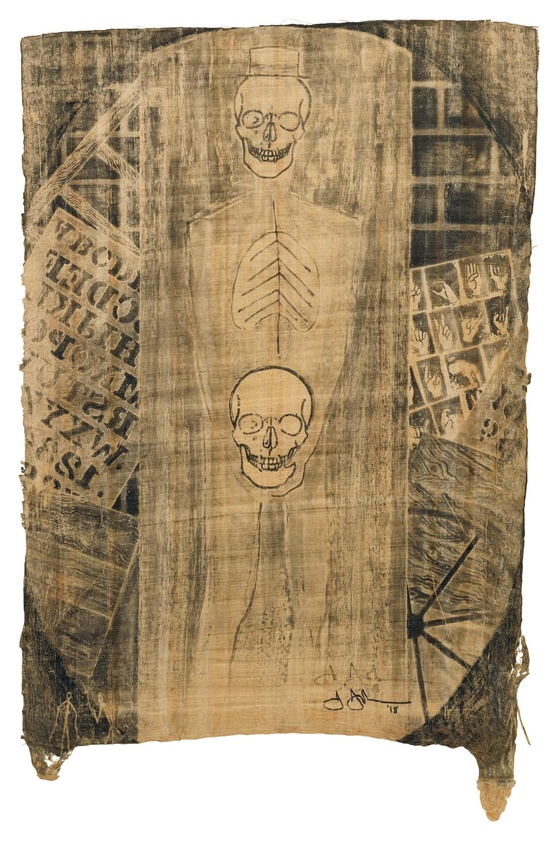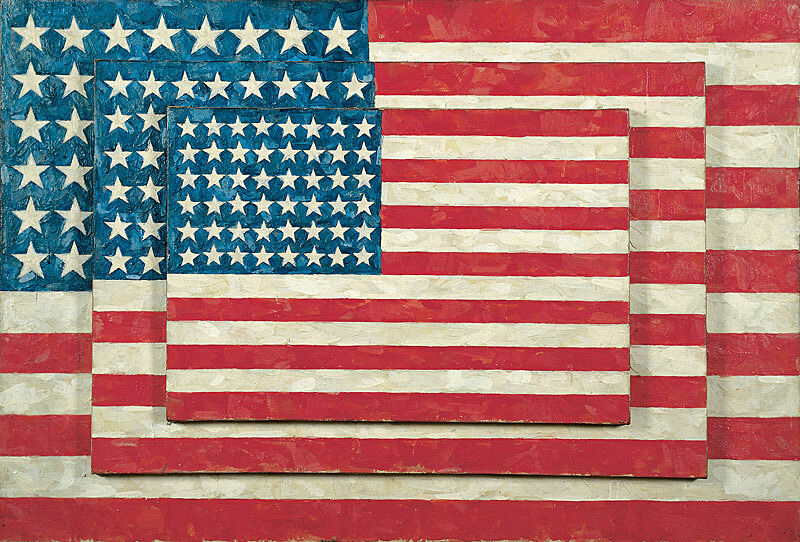According to What
Sept 24, 2021
0:00
According to What
0:00
Narrator: It’s pretty common to describe a work of art as being “dynamic.” In the case of According to What, that’s literally true: the painting is open to change. Since we’re in a museum, the usual “do not touch” rules apply. But originally, Johns meant for the work to be manipulated by the viewer. Some of the letters spelling out RED, YELLOW, and BLUE are on hinges. And in the bottom left, there’s a panel with a portrait of the French-born artist Marcel Duchamp that can be opened and closed.
Carlos Basualdo: But, most importantly, we should not forget the implications of the title. The title is According to What.
Narrator: Carlos Basualdo is a curator at the Philadelphia Museum of Art, and co-curator of this exhibition.
Carls Basualdo: And, that “what” might mean anything really. Ultimately, the title implies that any meaning depends on its use or uses. That no meaning is ever fixed once and for all. But, that the meaning depends really on: what do we bring to the scene in which the painting, in this case, takes place?
Narrator: This idea connects the painting back to the artist pictured on its surface, Marcel Duchamp. Duchamp had once proposed that works of art don’t stand on their own—they need the viewer to complete their meaning. That idea was very important to Johns, and to other artists of his generation like the composer John Cage and the choreographer Merce Cunningham. Johns became friends with Duchamp, and eventually came to own an edition of the French-born artist’s Green Box. You can find it to the left.
Carlos Basualdo: Many of the ideas of Duchamp, that Duchamp used, included in the notes of the Green Box could almost find equivalence in aspects of According to What. So, Duchamp writes to the effect that language hinges on painting or painting hinges on language. And, Johns, one can say, literalizes that in According to What. So, I think that’s very much tongue in cheek. And, I think that there’s also a sort of code-sharing between the two of them. The painting, one could think of, is like an affectionate missive. An affectionate letter from Johns to Duchamp.


